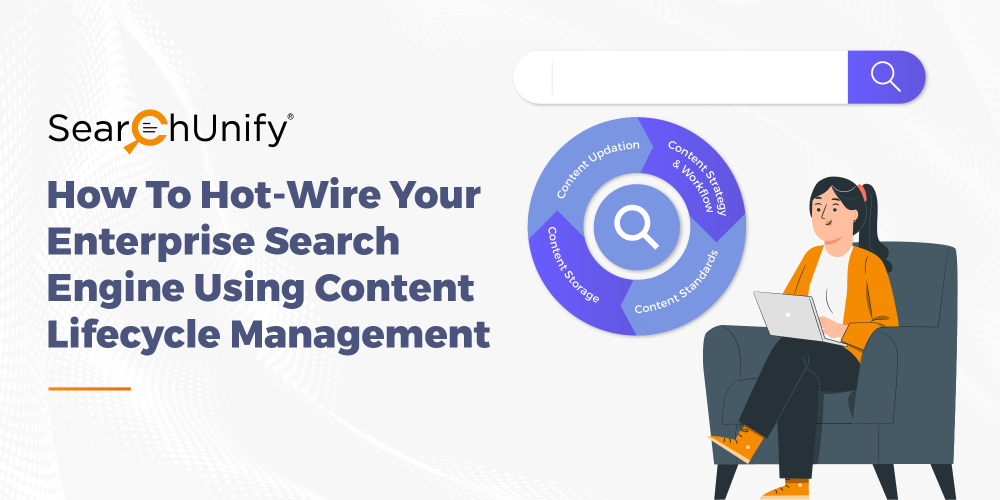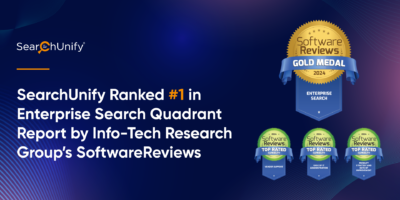
Organizations all across the globe struggle with enterprise search. So much so that they hire search and taxonomy consultants to implement search projects or fine-tune their existing search engines for the best results. And for a while, it works. Then, the enterprise search engine relapses into its former messy state. There are two reasons why that happens:
- Enterprise search is not a ‘set it and forget it’ project but a continuous enhancement effort to support changing user and business needs.
- A good deal of problem lies in the inconsistent content quality or standard. Poor metadata, inconsistent tagging, lack of content correction or too much of it (multiple versions of the same document), information garbage–all this leads to a messed up enterprise search experience.
An effective content lifecycle management system tackles both these issues by keeping the information quality in check, which further helps train the enterprise search engine. It’s a process of administering your company’s content – its creation, publishing, and retiral.
This blog post focuses on the challenges in the way of content lifecycle management while also listing some evergreen practices that’ll help you maintain it over the years.
3 Biggest Challenges in Enterprise Content Lifecycle Management
1. Clumsy Information Handoff Between Departments
Cross-functional teams bounce various versions of documents on different collaboration mediums like email or chat. With no process and content lifecycle management in place, multiple documents get created that confuse users with contradictory information. Similarly, if there is no formal process to review taxonomy and metadata, it wreaks havoc on the enterprise search experience.
2. Inconsistent Taxonomy as Content Passes Through Multiple Teams
If the engineering team calls an app chatbot while other teams refer to it as a virtual assistant or bot, your enterprise search engine is bound to have a hard time connecting the dots. Some advanced engines powered by AI and machine learning can map synonyms to deliver relevant results. But even these AI models have to be consistently trained and fine-tuned as new words and users surface. And all this will be much easier if uniform taxonomy and content standards are in place.
3. Scattered Content Across Multiple Channels
There’s plenty of structured and unstructured data scattered across multiple channels like blogs, CRM, documentation, social media, etc. This makes it difficult to keep track of the content quality. Imagine you updated a feature of your product and simultaneously revised the documentation. But what about the blog post someone wrote about it a year ago?
These challenges might seem obvious but over time, they end up creating a chaotic enterprise search experience that is far from user expectations. Now, let’s look at some interesting ways to maintain content lifecycle and avoid getting trapped in poor enterprise search.
Best Practices for Maintaining a Content Lifecycle Management for Achieving Enterprise Search Success
1. Content Strategy and Workflow
Both strategy and workflow are key to managing your organization’s content. Create a strategy about the kind of content your organization is going to produce and align it with your business goal. For instance, if a B2B SaaS firm is going to release new product features, decide the areas that require content creation. It can be technical documentation, knowledge base articles, marketing collateral, sales content, etc. Once the strategy is established, focus on the workflow. Define a formal process and stick to it. Answer these questions and document them:
- Who will be the owner of each content piece?
- Who will be the reviewer before each content asset is published?
- Which teams need to be aligned to ensure the information is technically correct (eg: developers)?
- Who will review the content after it has been published on the web for any errors?
Develop and document this process so that even when new people join the team, the quality of work is not affected.
2. Content Standards Consistency
The worst thing organizations do that hurts the findability of content is add no metadata or inconsistent metadata.
Metadata is data about data. It’s extremely important to categorize content after creating it so that it’s easier for the enterprise search engine to crawl it. Many users simply create documents and files with the name or abbreviations only they understand and store in folders with no explicit metadata or tagging.
Educating different teams regarding the importance of metadata and how to add it can declutter your company content. Providing details like – customer name, year, project ID, etc., helps in easy filtering and information retrieval.
3. Content Storage
As mentioned earlier, the absence of a proper naming convention while creating and storing documents hinders the search engine. You can define the do’s and don’ts and assign someone to ensure that they are followed. You should also document the rules and make them easily accessible to the team. This way, everyone adheres to defined practices and new employees can quickly find and use the information or documents required.
4. Content Updation
Old is not necessarily gold when it comes to content management. Your product and service evolve with time and your documentation needs to be fully updated. There should be a mechanism in place that flags out-of-date content so that experts can update it on priority.
Several cognitive platforms make this process a lot smoother and less cumbersome than it seems. They also provide dashboards that keep a track of content performance so you can always course-correct your content strategy and fill gaps.
Want to Know More About Improving Content Findability? Hear From Delphix Experts
Watch this insightful panel discussion where customer education, community, and customer success experts discussed key challenges and best practices for improving content findability and self-service success.



















